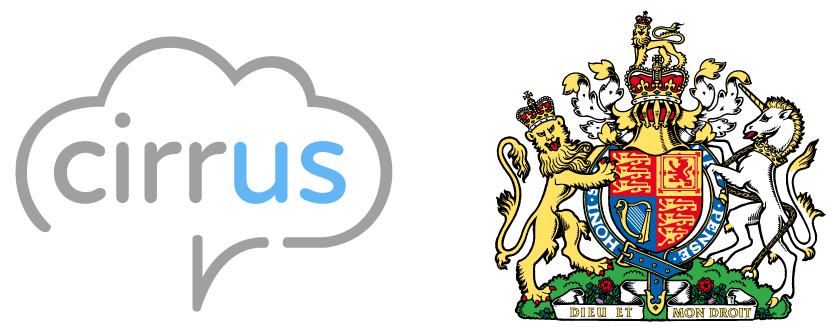This article is featured on TechHQ
Business growth is a common goal of most organisations, but achieving it requires much more than just increasing sales or reducing costs. Customer experience (CX) and employee experience (EX) are two critical components that significantly impact a company’s ability to achieve sustainable growth. A business that values CX and EX and invests in them accordingly can create a virtuous cycle of growth, where happy customers and employees lead to increased revenue, profitability, and market share.
To understand how CX and EX drive growth, we must first define them. CX refers to the sum of all interactions a customer has with a brand, from initial awareness to post-purchase support. EX, on the other hand, is the sum of all interactions an employee has with their employer, from onboarding to offboarding. CX and EX are interconnected, and one cannot exist without the other. Happy employees are more likely to provide excellent customer service, while satisfied customers are more likely to remain loyal and refer others to the business.
One area where CX and EX intersect is the contact centre. Contact centre technology plays a crucial role in enhancing both the customer and employee experience and ultimately driving business growth. Without the right tools and systems, it’s impossible for contact centre agents to provide the kind of experience that customers expect. Similarly, without technology that is easy to use and helps agents do their jobs more effectively, employee experience is likely to suffer. By implementing the right tools, businesses can improve communication, efficiency, and productivity, leading to happier customers and employees.
Enabling more personalised customer interactions
To improve customer experience, businesses can use contact centre technology to enable more personalised customer interactions. For example, speech analytics can be used to monitor customer conversations in real-time, flagging up issues or opportunities for improvement. This allows managers to provide feedback and coaching to agents as they work, helping them to improve their skills and provide a better experience for customers. Similarly, sentiment analysis can be used to gauge how customers are feeling during interactions, allowing agents to tailor their responses accordingly.
For instance, a retail organisation can implement conversational analytics to gain a better understanding of common customer complaints or issues. By analysing customer interactions, they identify a trend of long wait times, resulting in customer frustration and negative reviews on social media. Additionally, the data shows that agents are struggling to resolve issues first time due to a lack of training. The organisation uses this information to implement changes, such as additional staffing during peak times or the introduction of more advanced omni-channel capabilities. Additionally, the company invests in targeted training for agents, which results in more confident and competent agents who can provide First Contact Resolutions more effectively. These new processes lead to reduced wait times and improved customer experience.
As a result, customers are more satisfied with the service they receive, leading to positive reviews and word-of-mouth referrals. Negative public perception is reduced, and the organisation’s perceived value and reputation improve. All of these improvements can in turn impact investor perception, which could be invaluable to companies depending on their wider business objectives.
Offer multiple communication channels to customers
Customers have unique preferences for how they want to interact with businesses. Different demographic groups use different channels based on the type of query. For example, younger demographics are more at ease with self-service options such as chatbots, social media or chat for simple queries, while older demographics prefer to speak directly to a customer service representative for all queries, regardless of complexity.
By providing a range of options, businesses can ensure that they’re meeting customers’ needs and preferences, which is key to delivering a positive customer experience. At the same time, agents can use technology to manage these channels more efficiently, ensuring that they can respond to queries and complaints quickly and effectively.
For instance, the Theo Paphitis Retail Group now receives 62% of all customer contact through digital channels since enabling omni-channel. These conversations are demonstrably more efficient than traditional voice calls, with agents able to handle multiple customers at once. The solution has provided agents with a more efficient and streamlined approach to managing customer interactions, leading to improved productivity and reduced costs.
Supporting employee engagement and well-being
Contact centre technology can also play a key role in improving employee experience and well-being. By providing agents with the tools and systems they need to do their jobs effectively, businesses can help to reduce frustration and improve job satisfaction. For example, software that streamlines workflows and automates repetitive tasks can help to free up agents’ time, allowing them to focus on more complex queries and providing a better service to customers. The technology enables agents to work from anywhere, making it easier for businesses to operate with flexibility while maintaining high levels of service. Organisations can ensure that agents have the tools they need to provide an exceptional customer experience, regardless of their location.
When MacMillan Cancer Support implemented an omni-channel solution, it allowed their patients to opt for SMS conversation instead of voice, driving down queue times by over 30%. Patients get their queries answered quickly, and agents have time to deliver excellent service without time pressures.
Contact centre technology can lead to long-term success
In today’s competitive business landscape, CX and EX are critical components of sustainable growth. By investing in contact centre technology that enables personalised interactions and multiple communication channels, businesses can improve the customer experience, leading to increased revenue, profitability, and market share. At the same time, businesses can support employee engagement and well-being by providing agents with the tools and systems they need to do their jobs effectively, reducing frustration and burnout, and improving job satisfaction. By valuing CX and EX and investing in them accordingly, businesses can create a virtuous cycle of growth, where happy customers and employees lead to long-term success.
Reach out to a representative from one of our recommended CCaaS partners to discuss the needs of your contact centre agents and your business’s customers.




